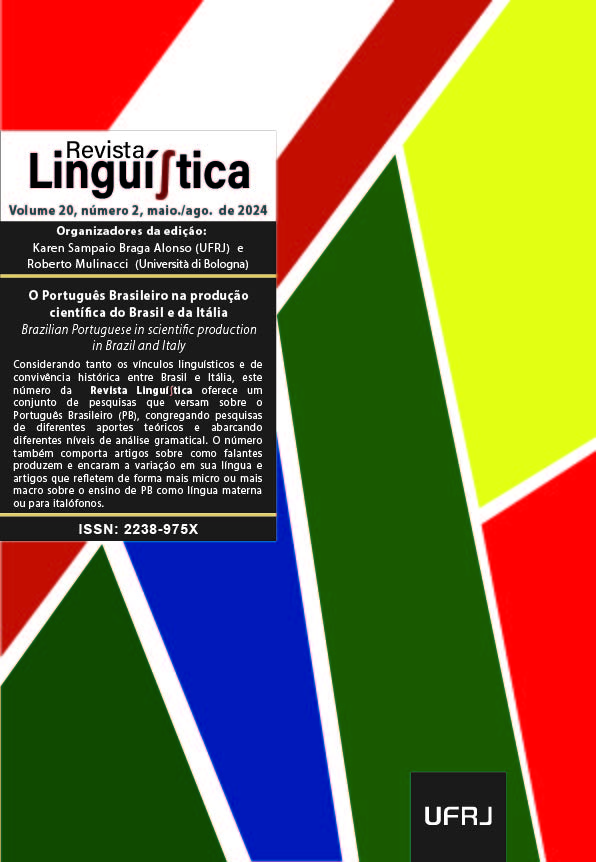É que-clefts in the light of syntactic cartography
DOI:
https://doi.org/10.31513/linguistica.2024.v20n2a63733Abstract
Clefts are sentences used to focus syntactic elements through A-bar movement and focusing items, such as the copula and the complementizer que. Brazilian Portuguese (BP) has canonical clefts, which have the linear sequence “cópula+foco+que+IP”. However, the literature mentions the existence of the so-called “inverted clefts”, which present the focus in the initial position. Based on the Cartographic Program, which conceives syntactic elements as complex and hierarchically organized objects, we will propose an analysis for these constructions, which we will call “Clivadas-é que”, since we will not consider it an inverted version of the canonical clefts, but an independent structure, being that the copula and the complementizer appear as functional items.
Keywords: Clefts. Cartography. Left periphery.
Downloads
Published
Issue
Section
License
Copyright (c) 2025 Revista Linguí∫tica

This work is licensed under a Creative Commons Attribution-NonCommercial 4.0 International License.
Authors who publish in the Revista Linguí∫tica agree with the following terms:
The authors maintain their rights, ceding to the journal the right to first publication of the article, simultaneously submitted to a Creative Commons license permitting the sharing with third-parties of published content as long as it mentions the author and its first publication in the Revista Linguí∫tica.
Authors may enter into additional agreements for the non-exclusive distribution of their published work (for example, posting in online institutional or non-profit repositories, or book chapters) so long as they acknowledge its initial publication in the Revista Linguí∫tica.

The journal Revista Linguí∫tica is published by the Post-Graduate program in Linguistics of UFRJ and employs a Creative Commons - Attribution-NonCommercial 4.0 International (CC-BY-NC).









